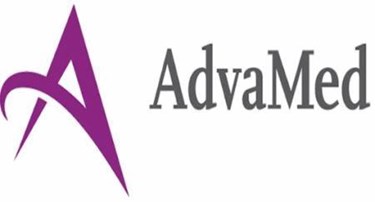AdvaMed Identifies The 2017 FDA Guidances With Highest Priority Among Its Members
By Jof Enriquez,
Follow me on Twitter @jofenriq

The medtech trade group AdvaMed (Advanced Medical Technology Association) has identified the guidance documents issued — or to-be-issued — by the U.S. Food and Drug Administration that are considered the highest priorities among its members.
AdvaMed's picks are among 12 final guidance documents on FDA's "A-list" of priority final guidance documents, those it fully intends to publish in 2017, which the agency released in December. AdvaMed’s “high-priority” documents are those with the potential to broadly affect industry, greatly impact routine administrative and/or review procedures at FDA, or address an area where guidance may be currently lacking, as well as guidances required under the 21st Century Cures Act:
- Use of Real-World Evidence to Support Regulatory Decision-Making for Medical Devices -- "This is an important developing area that guidance with the appropriate scope would help foster. That being said, the narrow scope of the draft guidance greatly reduced its usefulness. We urge FDA to revise the draft guidance in a manner that reflects our comments," AdvaMed stated in comments submitted to FDA’s docket.
- Design Considerations and Pre-market Submission Recommendations for Interoperable Medical Devices.
- New or revised procedural guidances for MDUFA IV implementation.
- Suggested Format for Developing and Responding to Deficiencies of Standards in FDA Regulatory Oversight of Next Generation Sequencing (NGS) - Based In Vitro Diagnostics (IVDs) Used for Diagnosing Germline Diseases
- Use of Standards in FDA Regulatory Oversight of Next Generation Sequencing (NGS)- Based In Vitro Diagnostics (IVDs) Used for Diagnosing Germline Diseases
- Use of Public Human Genetic Variant Databases to Support Clinical Validity for Next Generation Sequencing (NGS) – Based In Vitro Diagnostics
- Infectious Disease Next Generation Sequencing Based Diagnostic Devices: Microbial Identification and Detection of Antimicrobial Resistance and Virulence Markers
AdvaMed also recommended to FDA that final guidance documents on 510(k) modifications and software modifications be granted “A” list priority for 2017.
According to RAPS, AdvaMed singled out three of the four draft guidances included on FDA’s A-list:
- Update to Section V Demonstrating Insignificant Risk of an Erroneous Result in the Recommendations: Clinical Laboratory Improvement Amendments of 1988 (CLIA) Waiver Applications for Manufacturers of In Vitro Diagnostic Devices guidance
- Dual 510(k) and CLIA Waiver
- New or revised procedural guidances for MDUFA IV implementation
Of FDA's "B-list" – a list of final guidance documents that the Agency intends to publish as resources permit AdvaMed considers two as high-priority:
- FDA Categorization of Investigational Device Exemption (IDE) Devices to Assist the Centers for Medicare & Medicaid Services (CMS) with Coverage Decisions. (AdvaMed says this document can help align coverage decisions to advance innovation.
- Unique Device Identification (UDI): Direct Marking of Devices
"We recommend FDA move [the UDI] guidance to the “A” list because direct marking compliance dates for certain products began in 2016. Changes in interpretation will be costly and would create uncertainty regarding products in commercial distribution. Issuance of this guidance well in advance of the 2018 compliance date will provide manufacturers with the ability to plan and implement," states AdvaMed.
Two “B” list draft guidance documents also were listed among AdvaMed members’ priorities:
- Related Replacement Reagent and Instrument Policy
- Unique Device Identification System: Defining the Labeler
Medtech industry groups and manufacturers have always sought clarity on FDA’s annual guidance agenda, some of which appear ambiguous or too confusing to follow.
“AdvaMed’s membership comprises a breadth of manufacturers of medical devices, and we hope that our comments and additional guidance recommendations will be meaningfully considered in finalization of FDA’s guidance development priorities,” states the group.
